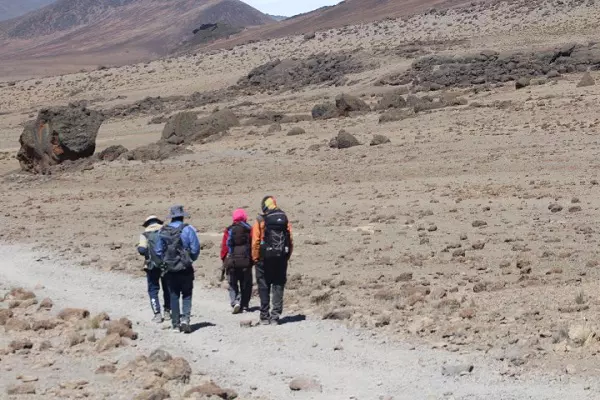
Embarking on the journey to summit Kilimanjaro is a dream for many adventure enthusiasts, and choosing the right route plays a pivotal role in the success of this endeavor. Among the various paths to the top, the Kilimanjaro Marangu Route stands out for its historical significance and unique features. In this comprehensive guide, we’ll explore the Kilimanjaro Marangu Route, delve into the distances covered along its winding trails, and unveil the success rates that make it a popular choice among trekkers.
The Marangu Route, often referred to as the “Coca-Cola Route,” is the oldest and one of the most established routes to Uhuru Peak, the highest point on Kilimanjaro. Renowned for its straightforward ascent and comfortable accommodations in mountain huts, it offers a distinct experience compared to other, more rugged routes.
The Marangu Route covers an approximate distance of 72 kilometers (45 miles) round trip, providing trekkers with a well-paced and gradual ascent. The distance is spread over several days, allowing for proper acclimatization and an immersive experience as climbers traverse diverse landscapes.
The journey begins at the Marangu Gate, where trekkers register and start their ascent through lush rainforests. The first day concludes at the Mandara Hut, nestled in the foothills of Kilimanjaro.
The trail leads through moorland, offering panoramic views of the surrounding landscapes. Trekkers arrive at the Horombo Hut, a key acclimatization point on the route.
This acclimatization day involves a trek to Mawenzi Ridge, which provides breathtaking views of Mawenzi Peak. Returning to Horombo Hut allows trekkers to adjust to the increasing altitude.
The trail ascends through the alpine desert, passing the last water point. Trekkers reach Kibo Hut, the final stop before the summit attempt.
The most challenging day involves the ascent to Uhuru Peak, starting in the early hours. Trekkers conquer the steep slopes and reach the summit, descending to Horombo Hut for the night.
The descent continues through the moorland and rainforest zones, culminating at the Marangu Gate. Trekkers complete the journey, receiving certificates to commemorate their Kilimanjaro ascent.
The Kilimanjaro-Marangu Route is often associated with relatively higher success rates compared to some other routes. Several factors contribute to its success, including a gradual ascent profile, well-maintained trails, and the availability of accommodations in huts. The success rates on the Marangu Route can vary, but they are generally estimated to be around 80% or higher. The gradual ascent and the option to sleep in huts rather than tents provide trekkers with a more comfortable experience, contributing to a higher likelihood of reaching the summit.
1. Gradual Ascent: The Marangu Route offers a more gradual ascent, providing trekkers with better opportunities for acclimatization and reducing the risk of altitude-related issues.
2. Comfortable Accommodations: Trekkers on the Marangu Route stay in mountain huts with basic amenities, offering a more comfortable lodging experience compared to camping in tents.
3. Well-Maintained Trails: The trails on the Marangu Route are well-maintained, making it accessible for a wide range of trekkers, including those with less hiking experience.
4. Historical Significance: The Marangu Route is the oldest established route on Kilimanjaro and has a historical charm, with trekkers following in the footsteps of those who have conquered the peak over the years.
1. High Traffic: The popularity of the Marangu Route can result in higher trekker traffic, especially during peak seasons. This may impact the sense of solitude some trekkers seek.
2. Limited Scenic Variety: While the Marangu Route offers diverse landscapes, some trekkers may seek more varied scenery, which is found on routes like Machame or Lemosho.
The Kilimanjaro Marangu Route, with its unique blend of historical significance, gradual ascent, and comfortable accommodations, stands as a captivating choice for those seeking to summit Africa’s highest peak. As trekkers traverse the Kilimanjaro-Marangu Route distance, the journey unfolds with panoramic vistas, diverse ecosystems, and the allure of reaching Uhuru Peak. With success rates that inspire confidence and a legacy that dates back decades, the Marangu Route remains a classic path to the summit, inviting adventurers to embrace the challenge and savor the triumph of standing atop the Roof of Africa.